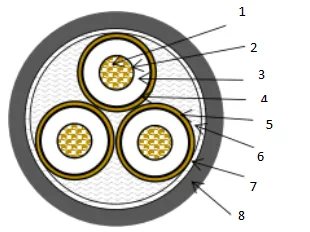ਨਵੰ. . 25, 2024 08:06 Back to list
Understanding the Functionality and Importance of Foot Valves in Fluid Systems
Understanding Foot Valves A Crucial Component in Fluid Systems
Foot valves are essential devices found in various fluid systems, particularly in water and irrigation management. These valves play a pivotal role in ensuring efficient fluid flow and preventing backflow, making them indispensable in applications ranging from agricultural irrigation to industrial processes.
What is a Foot Valve?
A foot valve is a type of check valve that is typically located at the end of a suction line, submerged in the fluid it is meant to control. Its primary function is to allow fluid to flow in one direction while preventing it from flowing back. This is achieved through a simple yet effective mechanism the valve consists of a flap or disc that opens in response to fluid intake and closes when the fluid is no longer being drawn.
Why are Foot Valves Important?
One of the main advantages of using a foot valve is that it maintains the prime in a pump system. Pumps require fluid to be present in their suction line to function effectively. When a pump shuts down, gravity can cause the fluid to drain back, potentially leading to air entering the system. This not only interferes with the pump's operation but can also cause damage over time. A foot valve mitigates this issue by keeping the fluid contained in the suction line even when the pump is not operating.
In agricultural settings, foot valves help maintain a constant supply of water to irrigation systems
. They ensure that water remains in the lines, allowing for quick reactivation of the system without the need for reprime, which can be time-consuming and wasteful.foot valve

Types of Foot Valves
Foot valves come in various types and materials suited for different applications. Common materials include bronze, stainless steel, and PVC, chosen based on factors such as the fluid being transported, pressure conditions, and environmental considerations. Additionally, there are variations in design, such as spring-loaded foot valves and those with strainer features to prevent debris from entering the pump system.
Installation and Maintenance
Proper installation and maintenance of foot valves are critical for optimal performance. The valve should be positioned correctly to avoid potential air leaks and ensure that it is fully submerged in the fluid. Regular maintenance checks are essential to ensure that the flap or disc is functioning correctly and to clear any obstructions that may hinder performance.
Conclusion
In summary, foot valves are a vital component in fluid management systems, allowing for efficient operation while preventing backflow. Their importance extends across various industries, particularly in agriculture and water management. With a proper understanding of their function, types, and maintenance needs, operators can ensure reliable performance and longevity of their fluid systems. Whether in residential, commercial, or agricultural applications, foot valves provide a simple yet effective solution to fluid control challenges.
Share
-
Y Strainers: Protecting Your Pipes with PrecisionNewsAug.27,2025
-
Wafer Type Butterfly Valves: Reliable Flow Control SolutionsNewsAug.27,2025
-
Wafer Type Butterfly Valves: Essential Components for Efficient Flow ControlNewsAug.27,2025
-
Reliable Flow Control with High-Quality Check ValvesNewsAug.27,2025
-
Reliable Flow Control with Gate ValvesNewsAug.27,2025
-
Innovative Check Valves for Reliable Flow ControlNewsAug.27,2025


